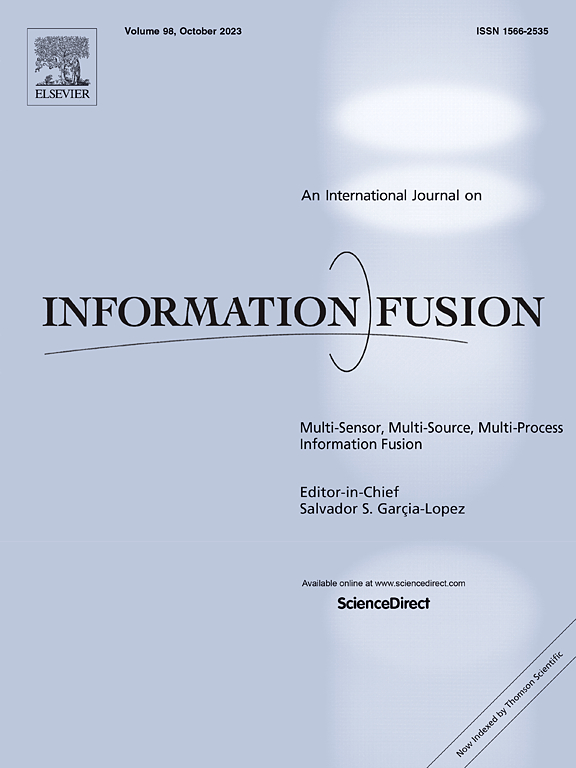Semantic-Preserving Feature Partitioning for multi-view ensemble learning
IF 14.7
1区 计算机科学
Q1 COMPUTER SCIENCE, ARTIFICIAL INTELLIGENCE
引用次数: 0
Abstract
In machine learning, the exponential growth of data and the associated “curse of dimensionality” pose significant challenges, particularly with expansive yet sparse datasets. Addressing these challenges, multi-view ensemble learning (MEL) has emerged as a transformative approach, with feature partitioning (FP) playing a pivotal role in constructing artificial views for MEL. Our study introduces the Semantic-Preserving Feature Partitioning (SPFP) algorithm, a novel method grounded in information theory. The SPFP algorithm partitions datasets into multiple semantically consistent views, enhancing the MEL process. Through extensive experiments on eight real-world datasets, ranging from high-dimensional with limited instances to low-dimensional with high instances, our method demonstrates notable efficacy. It maintains model accuracy while significantly improving uncertainty measures in scenarios where high generalization performance is achievable. Conversely, it retains uncertainty metrics while enhancing accuracy where high generalization accuracy is less attainable. An effect size analysis further reveals that the SPFP algorithm outperforms benchmark models by large effect size and reduces computational demands through effective dimensionality reduction. The substantial effect sizes observed in most experiments underscore the algorithm’s significant improvements in model performance.
多视图集成学习的语义保持特征划分
在机器学习中,数据的指数增长和相关的“维度诅咒”构成了重大挑战,特别是对于扩展而稀疏的数据集。为了解决这些挑战,多视图集成学习(MEL)作为一种变革性的方法出现了,特征划分(FP)在为MEL构建人工视图中起着关键作用。本研究引入了一种基于信息论的新方法——语义保持特征划分(SPFP)算法。SPFP算法将数据集划分为多个语义一致的视图,增强了MEL过程。通过对八个真实世界数据集的广泛实验,从具有有限实例的高维数据集到具有高实例的低维数据集,我们的方法显示出显着的有效性。它保持了模型的准确性,同时在可实现高泛化性能的场景中显著改善了不确定性度量。相反,它保留了不确定性度量,同时提高了难以实现高泛化精度的精度。效应量分析进一步表明,SPFP算法在很大程度上优于基准模型,并通过有效降维减少了计算量。在大多数实验中观察到的大量效应大小强调了该算法在模型性能方面的显着改进。
本文章由计算机程序翻译,如有差异,请以英文原文为准。
求助全文
约1分钟内获得全文
求助全文
来源期刊

Information Fusion
工程技术-计算机:理论方法
CiteScore
33.20
自引率
4.30%
发文量
161
审稿时长
7.9 months
期刊介绍:
Information Fusion serves as a central platform for showcasing advancements in multi-sensor, multi-source, multi-process information fusion, fostering collaboration among diverse disciplines driving its progress. It is the leading outlet for sharing research and development in this field, focusing on architectures, algorithms, and applications. Papers dealing with fundamental theoretical analyses as well as those demonstrating their application to real-world problems will be welcome.
 求助内容:
求助内容: 应助结果提醒方式:
应助结果提醒方式:


